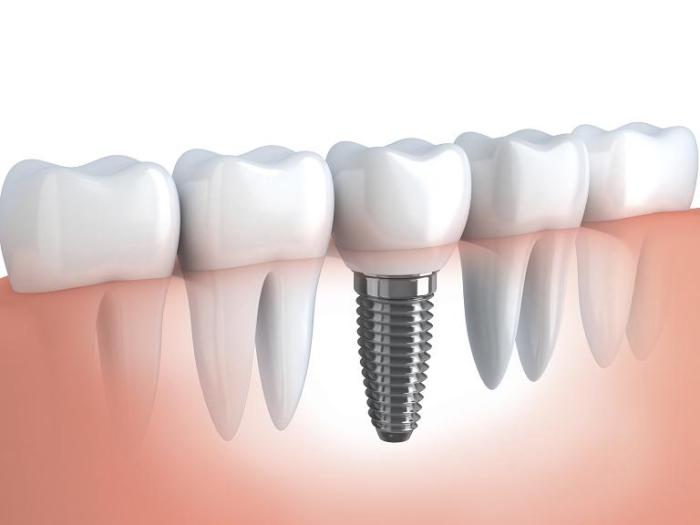Dental cement is a type of material that can be used for different dental purposes. Few types of cement are used to restore dental work, while other types are used to create original dental work. Some are temporary, while others are permanent. Dentists must follow the manufacturer’s directions for each type of cement, in terms of using the correct ratios, mixing, and preparing it under the accurate temperature. There are five types of cement used for the dental purpose: zinc-oxide eugenol, polycarboxylate, zinc phosphate, glass ionomer and composite resin.
Zinc-Oxide Eugenol
- Zinc-Oxide Eugenol liquid is composed of eugenol, water, zinc acetate, calcium chloride, and ascetic acid.
- The powdered version consists of magnesium oxide, zinc oxide, and silica.
- It comes in two types – one is weaker and is useful for temporary cementation, and the other includes reinforcing agents that make it more efficient for permanent cementation.
Zinc Phosphate
- Zinc phosphate liquid is composed of aluminium phosphate, phosphoric acid, and water.
- The powdered version consists of magnesium oxide, zinc oxide, and silica.
- It comes in two types: medium grain and fine grain.
- The fine grain is used for permanent cementation of crowns, onlays, inlays, and bridges.
- It creates a thin layer which is useful in accurate seatings of dental work.
- The medium grain is used as insulation for the filling of deep cavities.
Polycarboxylate
- Polycarboxylate is composed of polyacrylic acid, maleic acid, tartaric acid, itaconic acid, and water.
- The powdered version of Polycarboxylate consists of pure zinc oxide.
- The Polycarboxylate is used for permanent cementation of orthodontic bands and stainless-steel crowns, and it can be used as a base without causing any irritation.
Glass Ionomer
- The liquid form of glass ionomer is composed of maleic acid, itaconic acid, tartaric acid, and water.
- The powdered form is composed of calcium, zinc oxide, and aluminium oxide.
- There are three types of glass ionomer used for the dental purpose.
- One is used to cement metal restorations and orthodontic brackets.
- Another one is used to restore eroded areas near the gingiva.
- And the last one is used to line or bond the dentin.
Composite Resin
- The composite resin is flexible when used as dental cement.
- Its low film thickness and insolubility in water supports permanent cementation.
- It is used to make orthodontic bands and brackets, ceramic veneers, and metal castings.
Temporary Cement Vs. Permanent Cement for Dental Implants
Dental implants in Sydney involve one or more artificial teeth being inserted into one’s jaw to fill a gap in their teeth. Dental implants can be used to fill the gap where one or two teeth are missing, or to serve as an anchor for bridges, crowns, and dentures where all the teeth need to be replaced. Both temporary and permanent cement play a role in dental implants.
Dental implants in Melbourne require temporary and permanent cement in different ways. The dental implant may refer to an artificial tooth, which is inserted to fill the gap left due to a missing tooth. Dental cement can be used for making caps or veneers, which are added to the natural tooth to enlarge the size and change the colour or shape of the tooth. Full dentures and bridges are two other types of dental implant that include multiple teeth and require an adhesive for a safe and comfortable fit.
Function of Cement
- Both temporary and permanent cement are used to stick the external objects, such as dental implant teeth, caps, dentures or bridges to the natural teeth.
- For dentures and bridges, an anchor tooth will be chosen as the bonding agent so that the patients do not need to have all of their teeth cemented.
- In the case of dental implants, they are not usually cemented to the natural teeth; instead, they are drilled into the jawbone to become permanent teeth.
Features
- The temporary cement is used to hold dental implants for a few hours to several weeks if necessary.
- Permanent cement is used to fix dental implants, particularly veneers, crowns, and bridges, into the mouth.
- The permanent cement needs to be put on dental implants once, and the procedure is done by the dentist.
Benefits
- Permanent cement can be used to give style to the dental implants or partial implants onto the natural teeth that are chipped or broken, making the permanent cement a flexible tool for the dentists to have at their disposal.
- Temporary cement is a handy dental care tool for patients and used to replace permanent dental implants that have fallen out due to any reason until the patient can make an appointment to have the dental implants replaced professionally.



